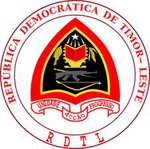Making aid transparent: Syncing international and government aid data
This article was initially published on the International Aid Transparency Initiative blog. They spoke to Anders Hofstee, co-founder of Catalpa, about our work on aid transparency and the release of our new tool, IATI Sync.
What is Catalpa International?
We use design and technology to improve how aid and development works. We’re big on data and evidence, and aid transparency is one of the areas we’re passionate about. We also work in education, health, environment, market development, disability and more.
We try to use information to help people make more informed decisions. Our biggest aid information project, Mohinga, collates local and international aid data in Myanmar. It’s currently supported by the German agency GIZ. We’re also working on an Aid Information Management System (AIMS) in Uzbekistan along with UNDP.
When did you start supporting governments to manage their aid data?
We started working on aid information systems following a workshop in Myanmar in 2013. The workshop concluded that Myanmar’s unique context called for a context-specific, home-grown system to collect and manage data about aid coming into the country. Together with our colleagues within the Myanmar Government we designed the ‘Mohinga’ AIMS to be the world’s first IATI-native AIMS, built from the ground up to be compliant with the IATI Standard. We launched Mohinga to the public in February 2015 at the Myanmar Development Cooperation Forum. Making it IATI-compliant from the start laid the groundwork for simpler import of data via IATI Sync.

IATI Sync is the first tool to automatically synchronise IATI data and local aid data, updating on a nightly basis.

What is the IATI Sync tool?
IATI Sync is part of our Mohinga AIMS. We released the tool late last year. Before IATI Sync, some partners working in Myanmar had to report their aid spending twice, as they were already reporting to IATI. By switching on Sync for a development activity, the system checks with an OIPA (Openaid IATI Parser and API) server each night to see whether any new IATI financial data is available. If new data is found, it’ll automatically be imported directly into the AIMS. That updated information is then immediately available via Mohinga’s dashboards, profiles and data analysis tools. The tool reduces the workload of data collection and increases efficiency, and also improves the quality of data collected. It also allows IATI data to be integrated directly with local data.
What made you develop IATI Sync functionality?
We’re always looking at ways we can improve aid data and help people use it to enhance service delivery. Our first run at a syncing tool was actually an activity importer, which we worked on with the UK Department for International Development and other development partners in Myanmar. But when running design workshops, we learned that the biggest need was for syncing financial information.
It made sense for us as it’s the most frequently updated piece of information, so we decided to focus the new tool on delivering that capability. In developing IATI Sync, our aim was to reduce data entry efforts, improve quality, and help people spend more time focusing on their projects.
Aside from reducing time spent on reporting, are there any other benefits?

In developing IATI Sync, our aim was to reduce data entry efforts, improve quality, and help people spend more time focusing on their projects.

IATI Sync is the first tool to automatically synchronise IATI data and local aid data, updating on a nightly basis. It can greatly improve the sustainability of aid data collection efforts, as once set up, IATI Sync will keep projects up to date as new financial data becomes available. Syncing the data also allows far more detailed data to be quickly imported, compared to manual data entry. Through IATI Sync, we can see a more accurate, comprehensive picture of what’s actually happening in the aid environment in Myanmar. That includes types of aid, volume of assistance, and where it’s going to. With better quality data, the Government of Myanmar and partners can help make sure resources are coordinated and directed to the right places.
In general, what do you think are the benefits to governments of using IATI data?
It’s important to us that global development initiatives are locally driven. IATI data allows governments to be in control of their country’s aid data and use it to monitor what’s happening across the nation.Mohinga has now tracked more than US$14 billion in commitments to Myanmar, and includes details on development activities and donors.

IATI data allows governments to be in control of their country’s aid data and use it to monitor what’s happening across the nation.

With that information, governments can more effectively plan for the future. Better data delivers a better evidence base on aid funding, which is important for decision-making. IATI data can also significantly lower monitoring costs for governments, particularly with tools like IATI Sync that make it easier to view published open data alongside local knowledge on activities and results.
Where can people find more information out about your IATI projects?
You can head to mohinga.info to see the Mohinga AIMS and the IATI Sync functionality in action. Many development partners are already using the IATI Sync tool in their work, including UNDP, UNICEF, the Governments of Italy and Australia, the German federal enterprise GIZ, and others.
You can also find more projects on our website and follow Catalpa International on Twitter, LinkedIn and Facebook.
Do you have any future plans in aid information management?
We have a lot! This year, we will be working on expanding our AIMS projects’ capabilities to integrate published IATI data and allow for more information to be automatically synced — such as organisations, more detailed activity data, and results. It all adds to the comprehensiveness of the evidence base. We’re also pretty excited to be working on an AIMS project in Uzbekistan, which we’ll be expanding as we build partnerships.
We’ll also be pursuing more capabilities for our Openly software, which forms the basis of many of our projects (including Mohinga). Openly is based on the IATI Standard, which gives us a shared language to describe development activities. It offers implementing partners a shared platform to view donor profiles, activities, data collection tools, results and more, all contributing to better aid coordination. In addition to Mohinga, you can also see Openly in action through the organisational profiles in our Hamutuk multi-sector nutrition program.
We think that development partners can work better together, and organisations’ use of Openly in Myanmar, Uzbekistan, and Timor-Leste are showing us how.
. . . . . .
Thanks for reading! Learn more about us at www.catalpa.io, and about Mohinga at www.mohinga.info.














